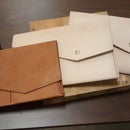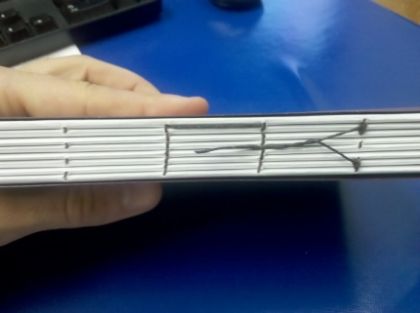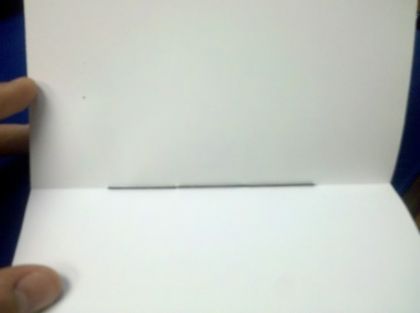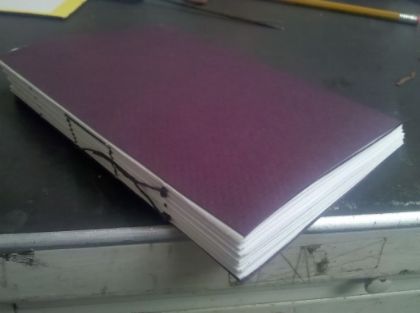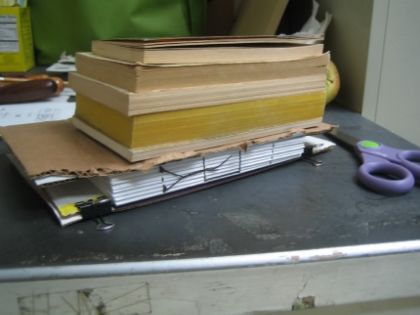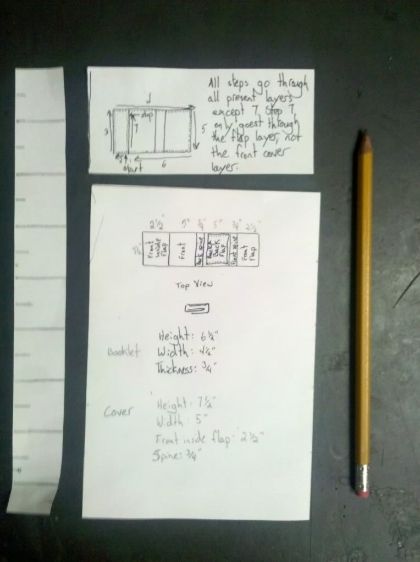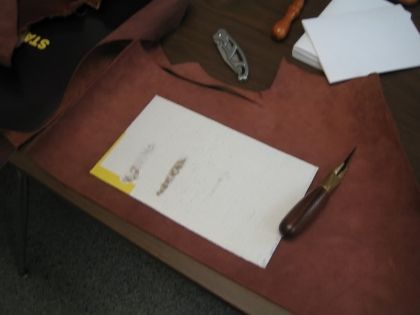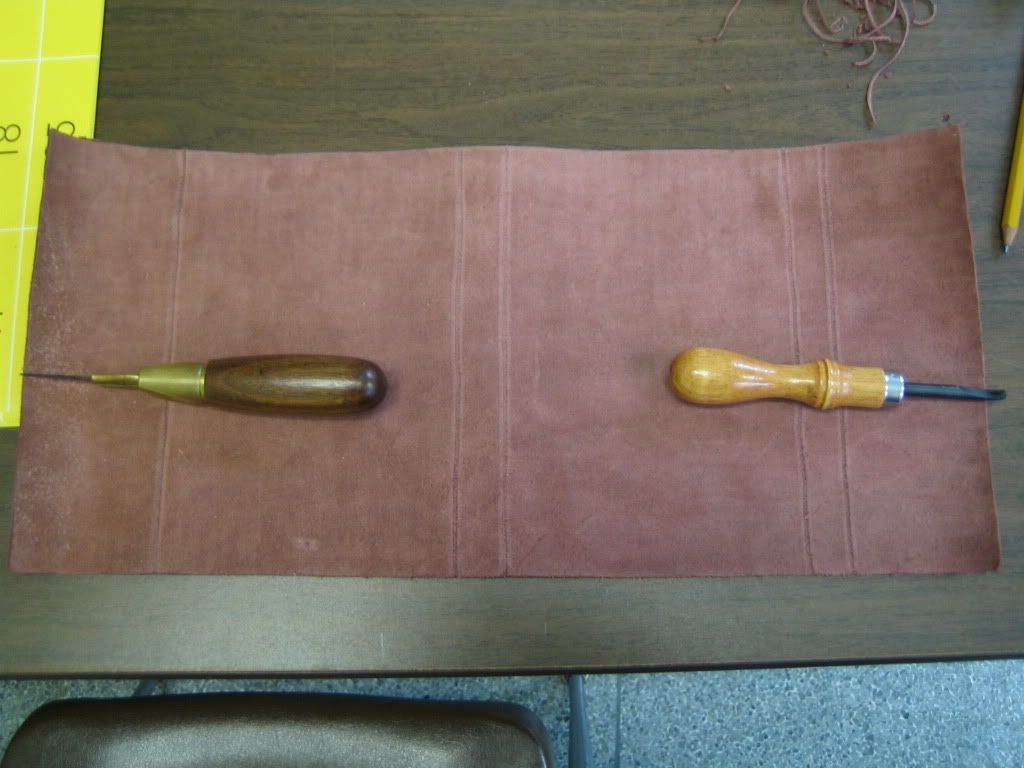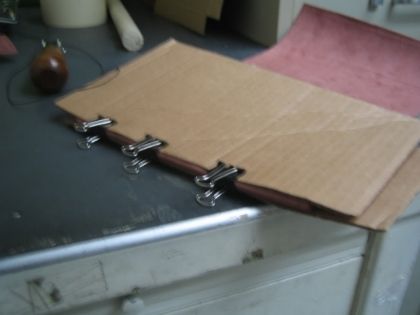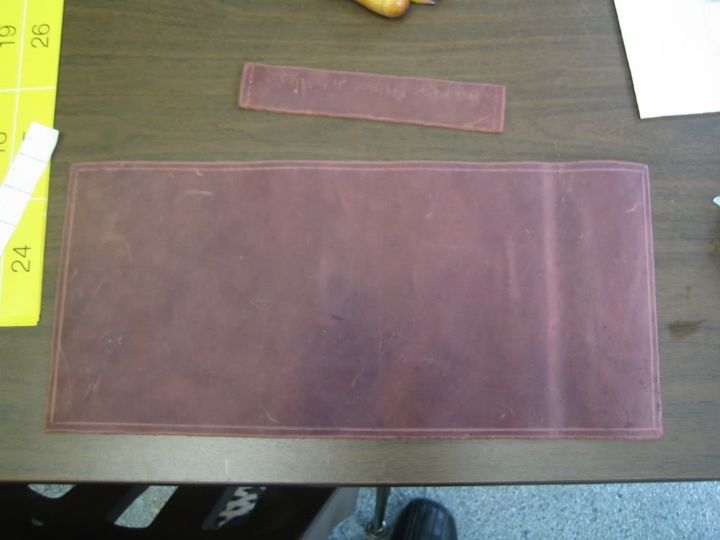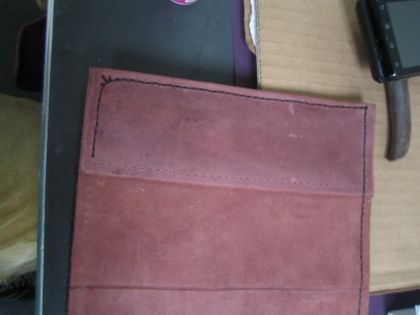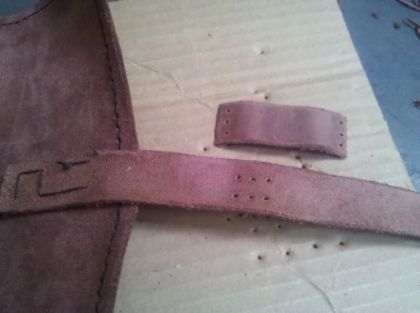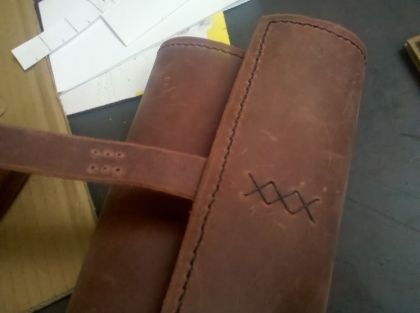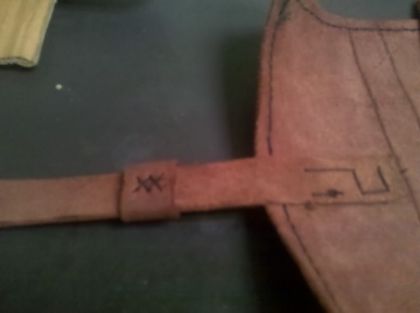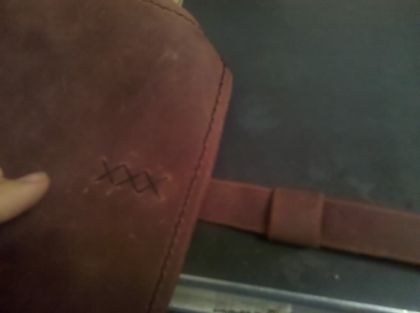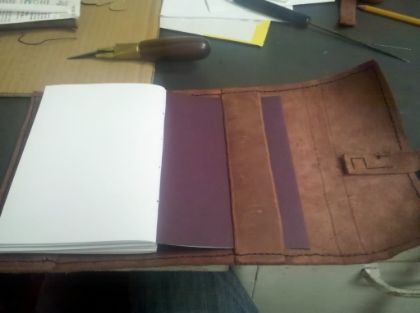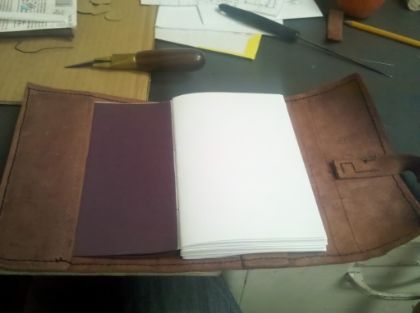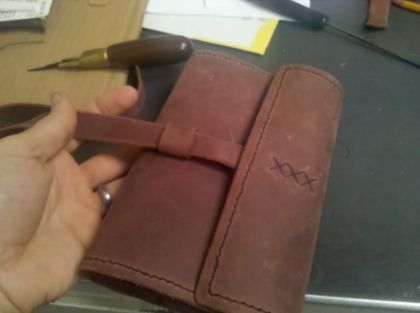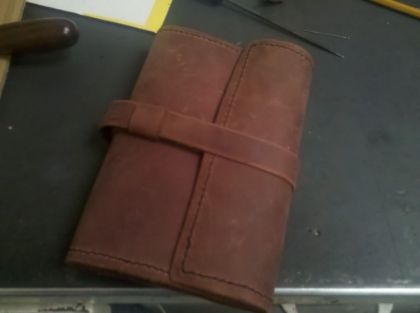Introduction: How To: Leather Bound Journal
The inspiration for this project came from the huge waste of paper at my office. There are certain processes our system goes through that result in printing off pieces of paper with only a small amount of useless text at the top... which usually get thrown right in the trash. So I figured why waste it when I can use it?!
After collecting enough of these pages I used a paper cutter to trim the printed part off and even out the size a little. The size I decided to go with was 7x9, which would give me a journal page that was seven inches tall and five and a half inches wide.
Step 1: The Pagemaster
I'm rolling all of the paper based steps into one since the focus of this instructable is more on the leather aspect. In fact, none of this step is necessary to make a leather journal. It's just the way I did it. You could use an existing notebook or even a book.
Be warned, this first step is a doozy.
This was my test page that I folded and creased and marked on until it was generally useless for anything other than being a template. I cut about three pages at a time, since if you do more than that the cuts get really ragged. Once you've cut everything to the right size, separate the pages into piles. I did eight piles of six sheets.
Fold each pile in half. 1 page at a time. Yes this takes forever. Here's the end result:
Each folded group of pages is called a signature. I don't know why. Once you've folded them you need to poke holes in the creases so you can sew them together. I used a leather awl. Poke four holes, spaced evenly apart, along the creases. Make sure it stays in the crease and doesn't stray onto the page itself.
Sew the pages together using a complicated method that's really hard to explain.
...No really, here's one of the sites I used to figure out how to do it. That site actually explains the way to do the whole binding process in a much more detailed way than I could ever explain it so rather than explaining it myself I'm just going to point you in that direction.
I used a strong waxed thread that I got from my local Tandy Leather store, but you can use any strong thread. If you want to wax it just run it over the bottom of one of those fat candles! This is what mine looked like when I was done with it.
After you've bound the pages they need to be reinforced. You can glue cheese cloth to the back which I haven't done, but would recommend. Then you need to put some sort of cardstock on the outside pages. I used some stuff we happened to have around. I think it's water color paper, but it was stiff enough.
Measure it the same size that you used for the pages (in my case 7x9) and fold it the same way as well. Put a thin layer of glue on one side and fold it over one of the outside pages. After you've glued one side you can glue the other side and then move onto the opposite page of the book. Apply pressure as it dries.
Now you have a journal to put in your leather cover. Yay!
Step 2: Measure Twice, Cut Once
To figure the size I drew some crummy sketches and wrote some tiny numbers.
Or: I measured the width x2 (front and back), plus the thickness, plus how much I needed it to overlap for the inside flap that held the booklet in and the outside flap which held the book closed. A total of sixteen inches. For the height I just added about an inch more than the height of the booklet. So you understand the parts I'm talking about I'll put a picture here... even though it's kind of a spoiler. You'll also need to cut a strip of leather the same height and about an inch or so wide to hold the back cover of the booklet in place.
I used a pre-dyed leather that I got out of the scrap bin at Tandy.
I was using a piece of cardboard as a straight edge so my cuts were straight... turns out the cardboard wasn't straight, whoops. Lesson learned, get a right angle/square. If you don't have a super sweet leather cutting knife like the one pictured just use an exacto or a box cutter or some really strong scissors.
Once it was cut out I scored where it needed to be folded.
Step 3: Stitch It to the Limit
First I wanted to form the inside flap so I folded on my scored line and clamped it down. Make sure you have something in between your clamps and leather so it doesn't make any ugly marks in it.
Using a stitching tool I made the marks I would use when I stitched it.
When you make the stitch marks wet the leather first. It helps the imprints stay. If you don't have a special tool for this don't worry. Wet the leather, and then (using a ruler as a straight edge) run the back edge of a butter knife along your stitch line. Then use a fork to make the stitch marks.
Start sewing.
I started by sewing the flap down. Remember not to sew it shut though. Also, don't get carried away and forget to put that strap in. I almost did. Try to plan your sewing so that you begin and end in an easily concealable place.
I used a sewing awl to do the stitching. If you've never used one check out this video. It really was invaluable. The one change I would make to the instructions in the video is that I would figure about 16-18 inches of thread for every 12 inches you sew. Maybe I'm just not good at measuring, but I ran out half way through. You don't have to use a sewing awl either. You can use a standard needle and thread but you'll probably want to pre-punch your holes with an awl or stitching hole punch.
Step 4: A Strapping New Journal
The next step is the strap for the closure. I started with a strip of leather much too long, sewed it on and then cut it down to the size I wanted it. I sewed it to the inside of the flap because that just made the most sense to me. I didn't care what the inside looked like but I did want the outside to look good.
I punched holes into the strap and made a smaller strap out of the excess I cut off which I sewed to the longer strap. This was the hardest bit of sewing I did on this project.
The cover is now done and just needs the booklet inserted. Some people choose to stitch the booklet to the outside cover, but I wanted something I could easily change out when I finished with it, which is why I opted to include the flaps to hold it in. To insert the booklet I slid the back page under the smaller flap as far as it would go, then inserted the front page under the front flap and pushed it in until it was even between the two.
TaDa! Now just wrap the strap around and insert it into the little belt loop thingy!
The next step is to fill it with artwork, notes, lists, insane drivellings, or whatever you want! Have fun!


